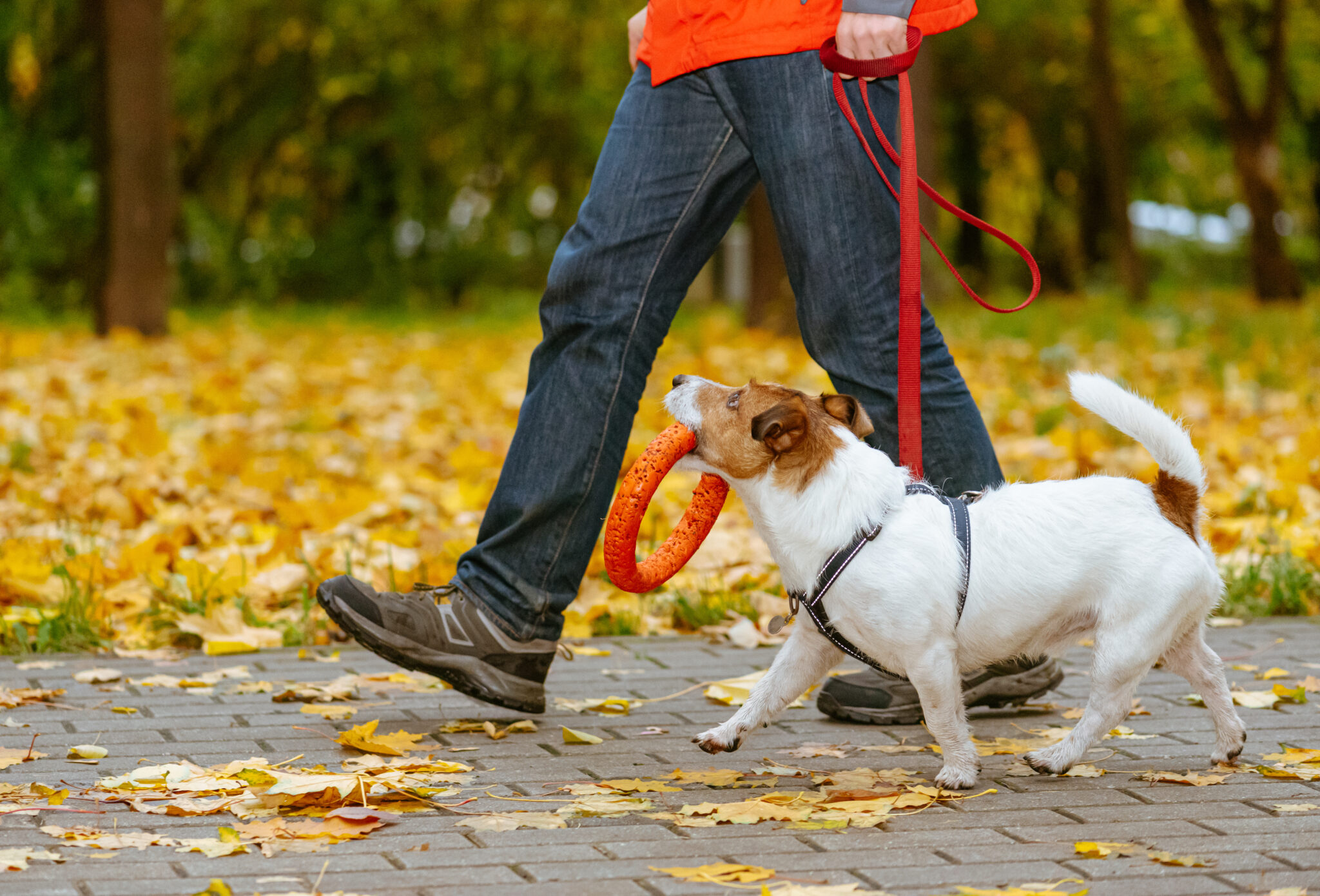
Leash pulling is one of the most common challenges dog guardians face. A walk that should be relaxing and enriching can quickly turn into a frustrating tug-of-war. One of the main reasons this behavior is so tricky to fix is that it’s easy to unintentionally reinforce pulling—even when we’re actively trying to teach the opposite.
Training loose-leash walking takes consistency and patience, but your dog still needs regular exercise and mental stimulation in the meantime. This often leads to a compromise: allowing some pulling just to meet your dog’s physical needs, which unfortunately reinforces the habit.
The good news? When you learn how to teach your dog to walk on a leash using positive reinforcement, patience, and a clear training plan, you can build a strong foundation for calm, connected walks—without force or outdated tools like prong collars or choke chains.
1. Begin Indoors to Build Focus
The first step in how to teach your dog to walk on a leash is to start in a calm, distraction-free environment—like your living room or a fenced yard. Clip the leash to your dog’s harness, but don’t hold it yet. Let it drag behind them as they move around.
Have a handful of high-value treats ready. Every time your dog looks at you, mark it with an enthusiastic “Yes!” and offer a treat. This simple exercise teaches your dog that paying attention to you is rewarding—even when the leash is on.
Pro Tip: Keep sessions short (3–5 minutes) and repeat them a few times a day. You’re laying the foundation for engagement, which is essential once you move to more distracting environments.
2. Teach Step-by-Step Walking With You
Once your dog is checking in with you consistently, start taking a few slow steps. You can now gently hold the leash or continue letting it trail. Mark and reward every time your dog stays close and moves with you.
Use a simple pattern:
- Say “Let’s go”
- Take a step
- Say “Yes!”
- Deliver a treat
Gradually increase the number of steps before rewarding. You can even walk backward at first to encourage your dog to follow.
Pro Tip: Change directions often to keep your dog engaged. If they forge ahead or disconnect, pause and try again—this keeps the focus on moving together.
3. Add Your Walking Cue: “Let’s Go!”
A key part of how to teach your dog to walk on a leash is introducing a consistent cue. Once your dog can walk with you for 8–10 steps, begin saying “Let’s Go!” right before you move.
Reward your dog for being in the desired position—typically by your side. Feed the treat straight down beside your leg to clearly mark that location as the “sweet spot.”
Pro Tip: Always reward in the same place (beside your leg) to help your dog learn exactly where you want them during a walk.
4. What to Do When Pulling Happens
Pulling is a normal part of the learning process. The key is to stay calm and avoid correcting it with force. The moment the leash goes tight, stop walking. Wait quietly. As soon as your dog loosens the leash—even a little—mark it and reward.
If your dog is too distracted to refocus on their own, calmly call them back to you. When they’re next to you again, say “Let’s Go” and continue the walk.
Pro Tip: Let your dog choose to return to you rather than dragging them back. This builds trust and teaches that pulling leads nowhere, while calm walking is the key to forward progress.
5. Reinforce Frequently at First
When learning a new skill, dogs need frequent feedback. Early in your training, reward your dog every few steps with a treat, praise, or access to something they want—like a tree, a sniff, or greeting a friend.
As your dog improves, gradually switch to a variable reward schedule. Sometimes it’s a treat, other times it’s a sniff break or verbal praise. This keeps your dog motivated, just like a slot machine keeps people playing.
Pro Tip: Use a mix of reinforcers. While food is powerful, don’t underestimate the value of a favorite toy, praise, or permission to explore.
6. Make Yourself the Most Interesting Thing on the Walk
A big part of how to teach your dog to walk on a leash is keeping your dog engaged. Be interactive! Talk to your dog, praise them, and let them know when you’re about to turn—“This way!”—then reward for following.
If your dog loses focus, ask yourself:
- Is this environment too stimulating?
- Is the reward not valuable enough?
- Is the exercise too advanced for this location?
Adjust your expectations and setting to help your dog succeed.
Pro Tip: Leave distractions (like your phone) in your pocket and treat the walk as shared quality time.
7. Don’t Forget to Let Your Dog Be a Dog
While structure is important, dogs need freedom to sniff, explore, and decompress. Set aside portions of each walk for sniff breaks using a longer leash (always with a harness for safety). You can even use a cue like “Go sniff!” to let your dog know it’s their time.
This balance between structured walking and exploration makes the entire experience more rewarding for your dog—and more enjoyable for you.
Pro Tip: Letting your dog sniff isn’t “giving in”—it’s giving them what they naturally need for mental enrichment.
Final Thoughts
Learning how to teach your dog to walk on a leash isn’t about control or dominance—it’s about communication, consistency, and mutual understanding. With the right foundation, positive reinforcement, and realistic expectations, your walks can go from stressful to enjoyable in a matter of weeks.
Does your dog pull on leash? Have you tried any of these techniques before? Share your leash-walking journey in the comments—I’d love to hear what’s worked (or what you’re still working on)!

